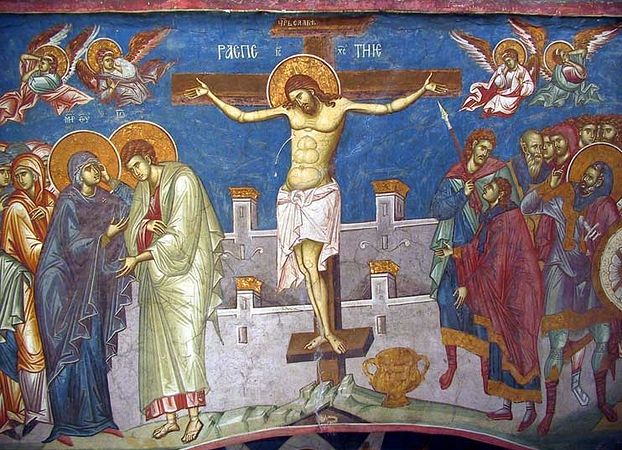August 1st is an interesting feast to observe: the Procession of the Holy Cross. We coming to the end of the liturgical year (the new year begins on September 1st) and significantly we are given to focus on the Holy Cross. In September, we locate our gaze on the Exaltation of the Holy Cross. We end where we begin –the salivifc nature of the wood of the Cross.
Miriam Stulberg, a member of Madonna House community in Canada recently the following meditation, “A Sign of Our Times” from the following is taken for our consideration. Madonna House the place where Melkite Archbishop Joseph Raya lived for many years as hermit and spiritual father.
“In his book The Face of God, Archbishop Joseph Raya describes the symbolism in the way the gesture is made in the Eastern Catholic and Orthodox churches:
The thumb, index finger, and middle finger of the right hand are joined together, while the fourth and little finger are joined and bent into the palm of the hand. The three fingers are joined together so as to form one entity, expressing our faith in the Trinity, Three in One. The fourth and the little finger joined together in the palm also form a unity which signifies our faith in the Incarnation, the union of God and man in one Person. Then, by the gesture of the cross, we proclaim our faith in the Redemption: Christ died on the cross for our salvation.
After joining our fingers, we lift our hand to our forehead, calling on God the Father to be in our mind, offering him the homage of our intelligence. Then we bring our hand to our heart, offering our love to the Son and accepting his love and life. Crossing over to the right shoulder* we call on the Holy Spirit to inspire our actions and to be the source of all our life and works, and to the left shoulder to ask forgiveness for our sins.
Instead of the words “In the name of the Father, and of the Son, and of the Holy Spirit,” one can also say, “Lord, I give you my mind” or “be in my mind;” “I give you my love” or “be in my heart;” “I consecrate to you all that is good in my life,” or “be in the works of my life;” “I ask forgiveness of my sins. Amen.”
With such a frequently used gesture meant to be a consecration of the person or activity to God there is, of course, a danger of trivialization. St. John Chrysostom remarked that a sign of the cross made hurriedly and without personal devotion is an empty and ineffective “magical waving of the hand in which the demons rejoice. ”
St. Cyril of Jerusalem gives this exhortation:
Let us not be ashamed to confess the crucified. Let us devoutly make the sign of the cross on the forehead, and on everything—on the bread we eat, on the wine we drink. Let us make it when we go out and when we come in, when we lie down to sleep and when we rise up, when we journey and when we rest.
Through this simple but profound gesture, worship flows from our very body and our life is lifted from the material plane to the spiritual, “filling everything we do with meaning, drawing us toward the realities they represent and this consciousness becomes a source of life, joy, confidence, and spiritual security” (Archbishop Raya).
*In the Eastern rites of the Catholic Church, as well as in the Orthodox Churches, the sign of the cross is made from right to left.
So, today, let us renew our devotion and focus on the cross of our Savior.
